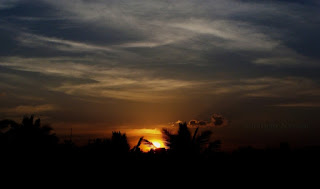 Rajasthani Bride wearing Gharga Choli, I have painted this painting in 2009 by Acrylic color on canvas (72 x 48 inches).
Rajasthani Bride wearing Gharga Choli, I have painted this painting in 2009 by Acrylic color on canvas (72 x 48 inches).Indian wedding dresses are very different from Western style wedding attire. Understated is definitely not a word that could be ascribed to an Indian wedding outfit. Indian brides are expected to sparkle and shine and this expectation is fulfilled in brightly colored and intricately embroidered ensembles. Indian wedding dresses are usually red, as white is considered to be a color of mourning in many regions. Red is the traditional color of Indian brides and is considered to bring good luck and happiness to the prospective couple.
There is such an incredible amount of cultural and religious diversity in the Indian sub-continent that the exact style of Indian wedding dresses will vary from region to region. However, some common styles include the sari, Ghagra Choli and shalwar chameez.
Ghagra Choli usually consists of a very long skirt and short blouse. A lengthy scarf called a dupatta is draped across the chest.
Gagra choli, which is also known as Lehenga choli, is the traditional clothing of women in Rajasthan andGujarat.Chaniya choli is another term commonly used to refer it. It is a combination outfit of a Lehenga, tight Choli and a Dupatta.
Lehenga or Ghagra is a form of skirt which is long, embroidered and pleated. It is worn as the bottom portion of a Gagra choli. It is secured at the waist and leaves the lower back and midriff bare. It was introduced by the Mughals. Lehenga is a typical feminine silhouette that epitomizes style, craftsmanship, quality and class of Indian clothing.
The lehengas are made of a number of fabrics such as Silk, Cotton, Georgette, Crape, Net, Satin, Brocade and Chiffon. Even though designers have successfully used the various kinds of fabrics for making the lehenga, silk is still the most preferred fabric. Silk Lehenga is considered to be the most beautiful version of old traditional attire, as it used to be in Mughal era. Silk lehengas are timelessly classic. They have been in vogue since olden times and will always remain so. They own a special place in the fashion world as they are suitable to be worn for all occasions.
Apart from the fabric, decorative stitching patterns also play a role. Lehengas come with a wide variety of decoration work like zari, zardozi, embroidery, diamante work, beads embroidery work, kundan work,mirror work, etc.







































 Coffea canephora (Coffea robusta) is most largely cultivated plantation crop in
Coffea canephora (Coffea robusta) is most largely cultivated plantation crop in 



 The Chain Tree
The Chain Tree
